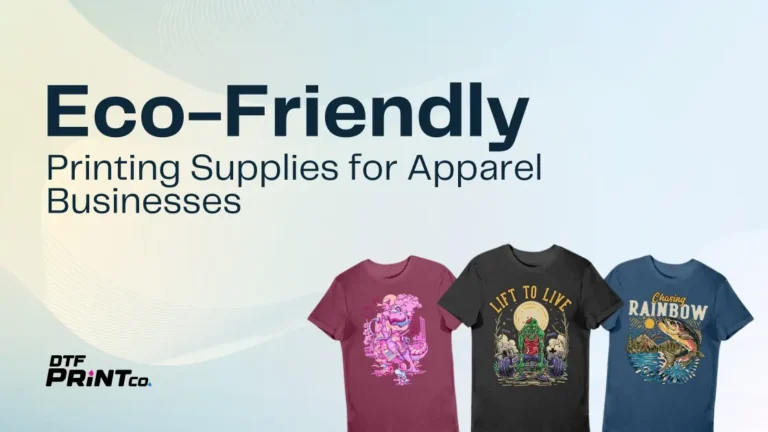Premade transfers have revolutionized the world of custom apparel, signage, and crafting. However, the success of any transfer heavily relies on selecting the appropriate material. Using improper surfaces leads to poor adhesion, fading, cracking, and early deterioration of the design. Mastering material selection is critical for producing high-quality, long-lasting results.
What Are the Best Materials for Applying Premade Transfers?
Several materials offer excellent adhesion, durability, and visual appeal when used with premade transfers. Choosing the right material ensures the design adheres properly and retains vibrancy over time.
1. Cotton Fabrics
Cotton is the most popular choice for premade transfers due to its breathable, natural fibers. Pure cotton (100%) provides a smooth, even surface that absorbs heat efficiently. Common examples include t-shirts, tote bags, napkins, and aprons. Research from the Textile Research Journal (2021) highlights that cotton’s hydrophilic nature enhances bonding strength, making it the preferred choice for vibrant, durable designs.
2. Cotton-Polyester Blends
Cotton-poly blends, particularly 60/40 or 50/50 fabrics, are ideal for combining softness with added strength. These blends are often found in athletic wear, casual shirts, and hoodies. They offer enhanced wrinkle resistance and durability. However, blends exceeding 50% polyester risk causing transfer peeling due to reduced porosity, requiring careful temperature management.
3. Polyester
Polyester materials like athletic jerseys, promotional banners, and performance wear respond well to premade transfers when applied using precise heat settings. Pre-pressing polyester to eliminate moisture is essential to prevent ghosting or blurry images. Specialized sublimation transfers work particularly well on polyester surfaces.
4. Canvas
Canvas surfaces, such as art canvases, tote bags, sneakers, and home decor items, provide an excellent, firm base for transfers. Their coarse yet consistent texture securely holds designs, especially when using a higher temperature and firm pressure setting.
5. Wood
Wooden surfaces, including signs, furniture, ornaments, and plaques, are increasingly popular for custom transfer applications. Smooth, sanded, and untreated wood like birch, pine, and maple allows transfers to adhere evenly. A study by the Wood Science and Technology Journal (2020) confirms that low-porosity woods deliver the best adhesion and design longevity.
6. Ceramic
Ceramics, covering items such as coffee mugs, decorative tiles, and dinnerware, are excellent candidates for sublimation transfers. A polymer coating is essential to ensure proper transfer bonding. Without coating, the ceramic’s non-porous surface repels the adhesive.
7. Leather
Real and faux leathers, used for products like wallets, belts, handbags, and journals, are well-suited for transfers. Opt for smooth, clean, untreated surfaces. Pre-testing on a small leather sample helps avoid damaging the material or the transfer.
Why Is Surface Preparation Crucial for Transfer Success?
Even with premium materials, poor surface preparation compromises transfer quality. Thorough preparation ensures maximum adhesive penetration and prevents bubbles, wrinkles, and misalignment.
Key preparation steps include:
- Cleaning: Use lint rollers, alcohol wipes, or gentle brushes to remove dust, lint, and surface oils.
- Pre-pressing: Lightly press the surface for 3-5 seconds to remove moisture and smooth out wrinkles.
- Smoothing: Ensure the material lays flat without creases or uneven areas.
Research from the Journal of Adhesion Science and Technology (2019) shows that meticulous surface preparation can enhance adhesive strength by up to 45%, significantly improving design durability.
What Materials Should Be Avoided When Applying Premade Transfers?
Certain materials are inherently incompatible with standard premade transfers due to their structure, coatings, or lack of porosity.
1. Nylon
Nylon fabrics, commonly used in jackets, backpacks, and tents, resist standard heat and adhesives due to their synthetic makeup. Specialized transfers designed specifically for nylon are required to achieve proper adhesion.
2. Treated or Coated Fabrics
Fabrics treated for water-resistance, stain-repelling, or flame-retardant purposes, such as outdoor gear or uniforms, create barriers against adhesives. Silicone, fluorocarbon, and other treatments significantly reduce transfer effectiveness.
3. Textured or Ribbed Surfaces
Materials with deep textures, like waffle knits, corduroy, and ribbed fabrics, present challenges for transfers. Gaps between fibers cause uneven application, leading to peeling, cracking, or incomplete designs.
4. Glass
Glass surfaces, including windows, picture frames, and mirrors, are naturally non-porous. Without specialized coatings, traditional transfers struggle to bond securely. Vinyl decals or sublimation methods on polymer-coated glass yield better results.
5. Rough or Unfinished Wood
Rough, splintered, or porous woods absorb adhesive unevenly, resulting in distorted or patchy transfers. Always sand wood surfaces until smooth and apply a sealant when needed for optimal results.
How Does Material Thickness Affect Premade Transfer Application?
Material thickness dictates how heat, time, and pressure should be adjusted during transfer application.
Tips for adjusting based on thickness:
- Thin fabrics (e.g., lightweight polyester): Use a lower temperature range (280-300°F) and shorter pressing time to prevent scorching or shrinking.
- Thick surfaces (e.g., canvas bags, wooden plaques): Apply a higher temperature range (320-375°F) and increased pressure to ensure even heat distribution and proper adhesive activation.
Conducting a small test application before committing to the full design helps identify and correct potential issues.
What Heat Press Settings Are Best for Different Materials?
Different materials demand specific heat, time, and pressure combinations to achieve optimal results.
| Material Type |
Temperature (F) |
Time (seconds) |
Pressure |
Notes |
| Cotton |
320-350 |
15-20 |
Medium-Firm |
Ideal for light and dark garments |
| Cotton-Poly Blends |
300-320 |
12-15 |
Medium |
Lower temperature to avoid scorching |
| Polyester |
280-300 |
10-15 |
Light-Medium |
Pre-press recommended |
| Canvas |
340-360 |
20-25 |
Firm |
Use extra firm pressure for texture |
| Wood |
350-375 |
25-30 |
Firm |
Smooth and seal before applying |
| Ceramic |
380-400 |
45-60 |
Medium-Firm |
Must have polymer coating |
| Leather |
280-300 |
10-15 |
Light-Medium |
Test for heat tolerance |
Following the manufacturer’s recommended settings for transfer paper and substrate ensures optimal adhesion and vibrancy.
What Are Common Problems When Applying Premade Transfers and How to Solve Them?
Even seasoned crafters and professionals encounter occasional problems. Recognizing and addressing these issues promptly enhances success rates.
1. Peeling Transfers
Peeling often results from inadequate pressure, insufficient temperature, or a dirty surface. Solution: Clean the surface thoroughly and repress with appropriate pressure and temperature.
2. Faded Designs
Low temperatures or short pressing times cause designs to appear faded. Solution: Increase temperature by 10-15°F and extend pressing time slightly.
3. Cracking Transfers
Cracks form when garments are overstretched or when excessive heat is applied. Solution: Use moderate heat, avoid overstretching fabrics, and select stretchable transfer materials when necessary.
4. Ghosting or Blurry Images
Ghosting occurs when the transfer paper moves during pressing, creating double images. Solution: Secure the transfer paper with heat-resistant tape before pressing.
5. Scorch Marks
Scorching happens when thin fabrics are exposed to excessive heat. Solution: Reduce temperature and use a protective Teflon sheet or parchment paper.
What Are Best Practices for Long-Lasting Premade Transfers?
Long-lasting, vibrant transfers depend on careful aftercare.
Key practices include:
- Allow at least 24 hours before washing: This curing period ensures adhesive stability.
- Use cold water cycles: Gentle washing prevents adhesive deterioration.
- Mild, non-abrasive detergents: Harsh chemicals can degrade design quality.
- Air dry or tumble dry low: Excessive heat from dryers shortens transfer lifespan.
- Iron inside-out: Protects the transfer from direct heat exposure.
Studies from the International Journal of Clothing Science and Technology (2022) indicate that garments following these practices experience up to 50% longer design longevity compared to those washed and dried using standard methods.
How to Choose the Best Transfer Paper for Different Materials?
The correct transfer paper type enhances final outcomes by matching adhesive qualities to the material.
| Material |
Recommended Transfer Paper Type |
Notes |
| Cotton |
Light or dark fabric transfer paper |
Match paper type to fabric color |
| Cotton-Poly Blends |
Stretchable transfer paper |
Improves flexibility and prevents cracking |
| Polyester |
Sublimation paper |
Requires heat-resistant ink |
| Canvas |
Heavy-duty transfer paper |
Handles thick, textured surfaces |
| Wood |
Sublimation or adhesive-backed transfer |
Smooth surface preparation recommended |
| Ceramic |
Sublimation paper with polymer coating |
High-temperature endurance necessary |
| Leather |
Low-temperature transfer paper |
Prevents scorching and maintains texture |
Selecting compatible transfer papers prevents misapplication and maintains design integrity.
Conclusion: How to Maximize Success When Using Premade Transfers?
Selecting suitable materials such as cotton, polyester, canvas, and smooth wood, while steering clear of nylon, treated fabrics, and rough surfaces, is essential for vibrant, professional-grade transfers. Preparing surfaces meticulously, calibrating heat press settings accurately, troubleshooting common problems, and applying proper care techniques all contribute to project success. Mastering these practices ensures vivid, durable designs that withstand wear, washing, and time, making your custom projects not only eye-catching but also impressively resilient.
FAQ
What materials are best for premade transfers?
The best materials for premade transfers are 100% cotton, cotton-polyester blends, polyester, canvas, smooth wood, ceramic with a polymer coating, and genuine or faux leather.
Can I apply premade transfers to nylon fabric?
Standard premade transfers do not adhere well to nylon. Specialized transfers designed specifically for nylon are required for successful application.
Why is surface preparation important for transfers?
Surface preparation is crucial because it removes contaminants like dust and oils, enhances adhesive penetration, and prevents common problems such as peeling or ghosting.
What are the common problems with premade transfers?
Common problems include peeling, fading, cracking, ghosting, and scorching. These issues often result from incorrect temperature, pressure, or surface preparation.
How do I ensure long-lasting results with premade transfers?
For long-lasting results, allow transfers to cure for 24 hours before washing, use cold water cycles, air dry whenever possible, and iron garments inside-out on low heat.
What transfer paper should I use for different materials?
Use light or dark fabric transfer paper for cotton, stretchable transfer paper for cotton-poly blends, sublimation paper for polyester, canvas, and ceramics with polymer coatings, and low-temperature transfer paper for leather.






